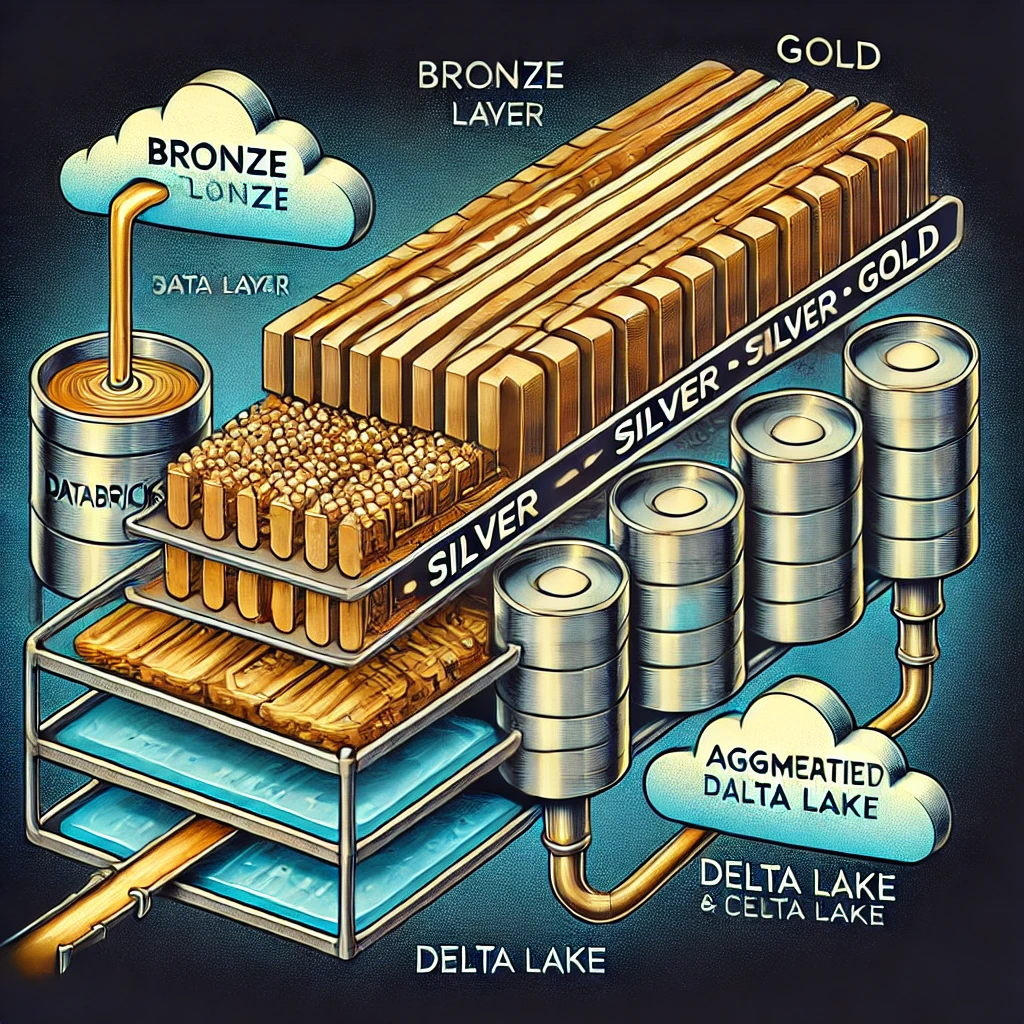Introduction: The Importance of Layered Architecture in Data Engineering

- Brief overview of the challenges in managing large datasets.
- Introduction to Databricks as a unified analytics platform.
- Why the Bronze, Silver, and Gold architecture is essential for efficient and scalable data engineering.
What is Databricks and How Does It Fit into Modern Data Engineering?
- Brief introduction to Databricks.
- Explanation of Databricks’ role in modern data pipelines.
- Overview of its integration with big data technologies like Apache Spark and Delta Lake.
The Bronze, Silver, and Gold Architecture: An Overview
- Bronze Layer: Raw, unprocessed data.
- Silver Layer: Cleaned, transformed, and validated data.
- Gold Layer: Aggregated, analytics-ready data.
- Benefits of using this layered approach, such as simplifying transformations, improving performance, and making data accessible for various business needs.
Implementing the Bronze Layer in Databricks
- Objective: Ingest raw data from multiple sources (e.g., IoT devices, databases, API feeds) into Databricks.
- Key Technologies: Databricks, Delta Lake, Apache Spark.
- Steps to Implement:
- Set up an environment in Databricks.
- Ingest raw data using Auto Loader or manual batch processing.
- Store the raw data in Delta Lake format in the Bronze layer.
- Ensure raw data is immutable for auditing purposes.
df_bronze = spark.readStream \ .format(“cloudFiles”) \ .option(“cloudFiles.format”, “json”) \ .load(“/mnt/raw_data”) \ .withColumn(“ingestion_time”, current_timestamp()) df_bronze.writeStream \ .format(“delta”) \ .outputMode(“append”) \ .option(“checkpointLocation”, “/mnt/checkpoints/bronze”) \ .start(“/mnt/bronze_data”)
Implementing the Silver Layer in Databricks
- Objective: Clean and transform data for further analysis and reporting.
- Key Technologies: Delta Lake, Apache Spark.
- Steps to Implement:
- Read raw data from the Bronze layer.
- Apply transformations such as removing duplicates, handling null values, and standardizing formats.
- Store the cleaned data in Delta Lake format in the Silver layer.
- Enrich data by joining with lookup tables.
- Code Example:pythonCopy code
df_silver = spark.read \ .format("delta") \ .load("/mnt/bronze_data") df_silver_cleaned = df_silver.dropDuplicates(["id"]).na.fill({"column": "value"}) df_silver_cleaned.write \ .format("delta") \ .mode("overwrite") \ .save("/mnt/silver_data")
Implementing the Gold Layer in Databricks
- Objective: Aggregate and prepare data for business intelligence (BI) tools, reports, and machine learning.
- Key Technologies: Databricks, Delta Lake, Power BI, Tableau.
- Steps to Implement:
- Read transformed data from the Silver layer.
- Perform aggregations, such as calculating KPIs or summarizing data.
- Store aggregated data in Delta Lake format in the Gold layer.
- Integrate with BI tools for visualization and reporting.
- Code Example:pythonCopy code
df_gold = spark.read \ .format("delta") \ .load("/mnt/silver_data") df_aggregated = df_gold.groupBy("category").agg({"sales": "sum", "profit": "avg"}) df_aggregated.write \ .format("delta") \ .mode("overwrite") \ .save("/mnt/gold_data")
Use Cases for the Bronze, Silver, and Gold Architecture in Databricks
- Real-Time Analytics: How the architecture supports real-time data ingestion and processing.
- Data Warehousing: How the layered approach improves querying performance and data management in data warehouses.
- Machine Learning: Preparing high-quality data for machine learning models using the Gold layer.
